We have been “on the road” now for nearly four weeks, from mid-March to early April, winding our way up the Italian peninsula. One of the joys of the trip has been the watching the landscape slowly awaken from winter’s slumber into a glorious, verdant spring. From the first plump buds, pregnant with possibility in the vineyards of Umbria, we have watched as the earth has birthed another season of life in a cacophony of greens and yellows. This joyful transformation has seemingly reached a crescendo in the lush hills of the Piemonte.
We have always loved the Northwest!
Rolling hills, vineyards, orchards, hilltop medieval villages, and castles everywhere, the Langhe region of Piemonte is a delightful rural retreat into nature after the glamour and polish of Milan. The vineyards produce world-class wines and the cuisine is rich and hearty. As if that weren’t enough, toss in stunning views of the Alps. We always seem to be drawn to the northwest!
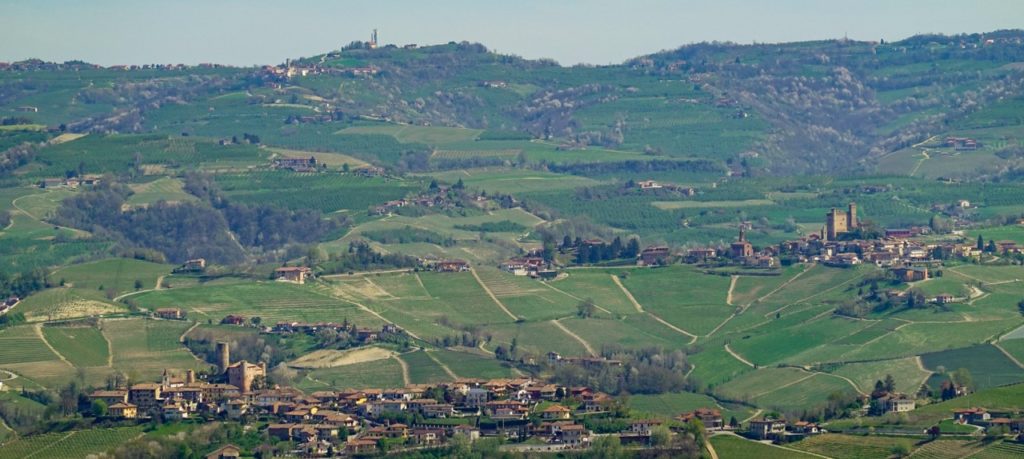
Over hill, over dale,
William Shakespeare – “Midsummer Night’s Dream”
Through bush, through briar,
Over park, over pale,
Through blood, through fire,
I do wander everywhere . . .
A Respite with Wine
A small, luxury resort, Casa di Langa, perched near the top of a hill to allow for storybook views, became our home for a few days. We spent them wandering about the countryside, tasting wine, and feeling genuinely awestruck by the beauty of the place. We have some experience with the world’s great wine regions, but the Langhe is the most picturesque we have ever seen. This is the home of the mighty Nebbiolo grape used to produce the celebrated Barolo and Barbaresco wines, and we had a lot to learn. Good progress towards our educational goals was made at Ca’del Baio winery. The Grasso family have been farming here since 1870 and began making wine in 1921. Today, they grow all their own grapes and are committed to organic, sustainable farming methods. We had an appointment for 2PM and as we got out of our car, we were greeted by Federica, one of the three sisters who are currently running this family business along with their parents. Federica took us on a tour of the winery while sharing her family history. Her passion for Langhe and winemaking was infectious. We spent a couple of hours tasting a variety of wines, learning about the idiosyncrasies of the Nebbiolo grape and the farming of this famous varietal.
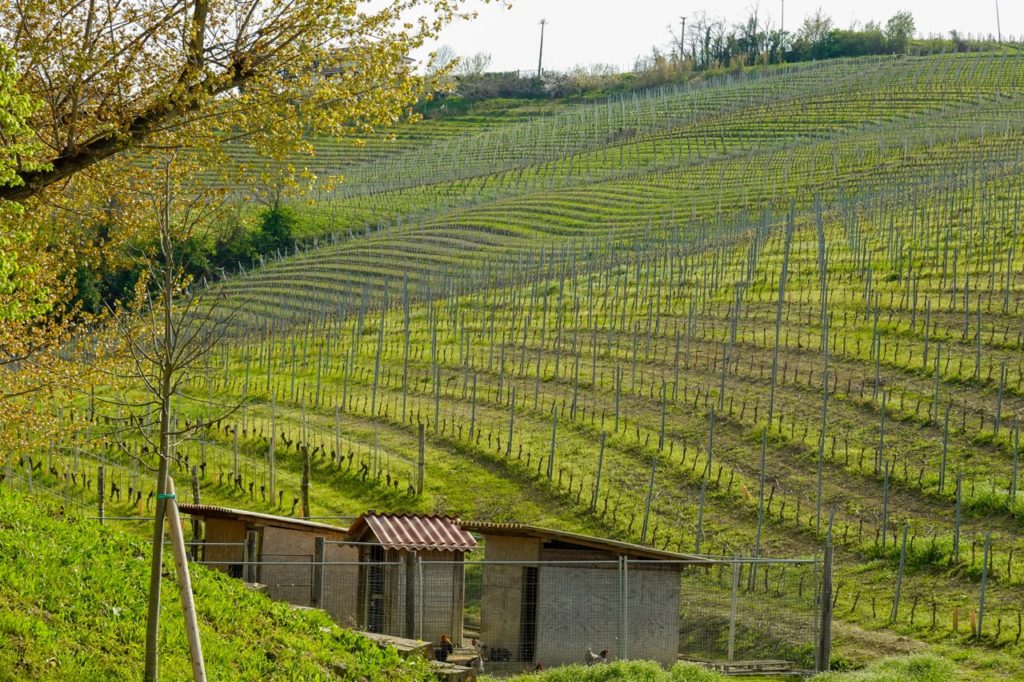
It turns out the success of these wines is a fairly recent development. While wine has been made in the region for millennia, it was traditionally a simple, fresh wine, produced in small amounts for the consumption of family and friends. As late as the early 60’s, Langhe farmland was primarily sought by poor farmers searching for an affordable patch to eke out a living. No one from the region dreamed that the seemingly untamable, highly tannic Nebbiolo could be turned into world class wine. In the early 70’s, a handful of restless offspring from these farmers spent time in the French wine regions. When they returned home armed with a whole new understanding of the potential for their home region’s vineyards, a transformation was born. Among the key insights, was the fact that Nebbiolo requires aging to be reach its potential. A Barolo Riserva, for example, must be aged for a minimum five years before it can even be released for sale and, these wines won’t begin to reach their potential until at least a decade has passed. Within a single generation, the Langhe went from poverty to affluence as their wines have become some of the most sought after in the world.
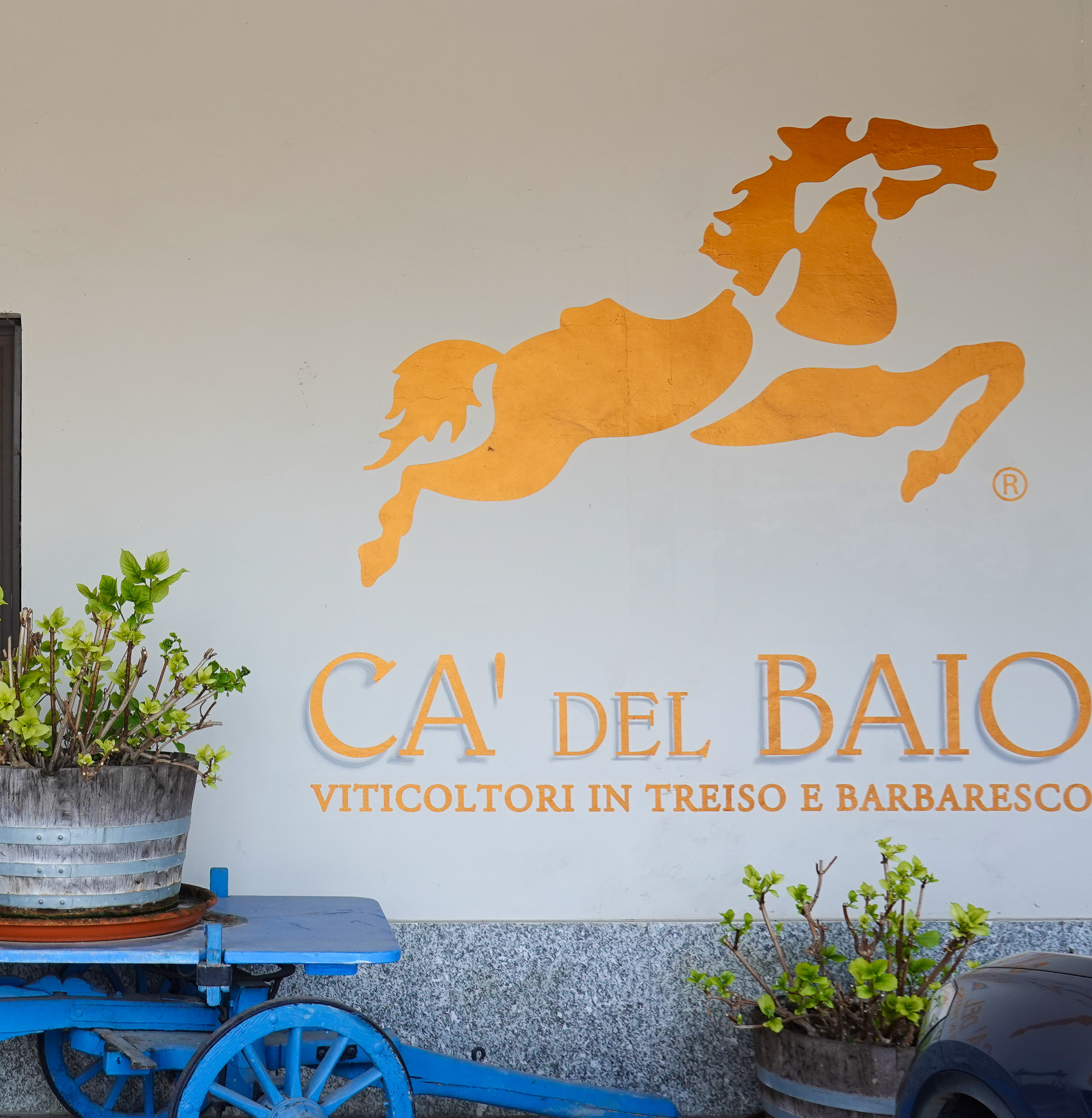
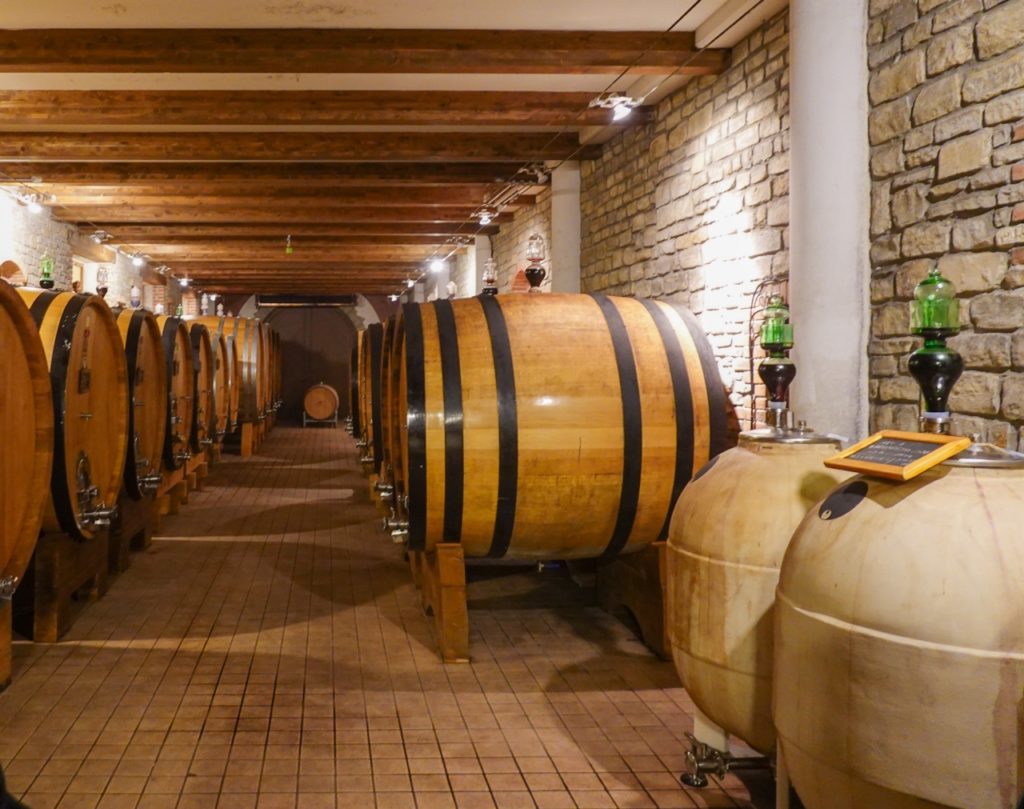
A Sneaky Wine
So, what’s in the glass? The first thing that gets your attention is the nose – flowers, maybe roses, against a backdrop of licorice? A very distinct bouquet that was consistent across all the Nebbiolo wines. The color is surprisingly light, not the deep saturation you associate with big red wines made to age. So, you have this flowery bouquet and a nice light color and then you taste. Wow! After a nice, seductive approach, the first taste is a powerful smack that has you asking, “where did that come from?!” This is a big, tannic, powerful glass of wine with a long finish where the fruit lingers on tongue. It’s a wine to be paired with equally big flavors – rich meat sauce, risotto, and game. Such is our arduous lifestyle that, after arranging to have a case of Ca’ del Baio sent to Valencia, we had time for just a quick rest before our next wine instruction appointment with the sommelier at the Casa di Langa resort. Fortunately, no driving was required after this second lesson.
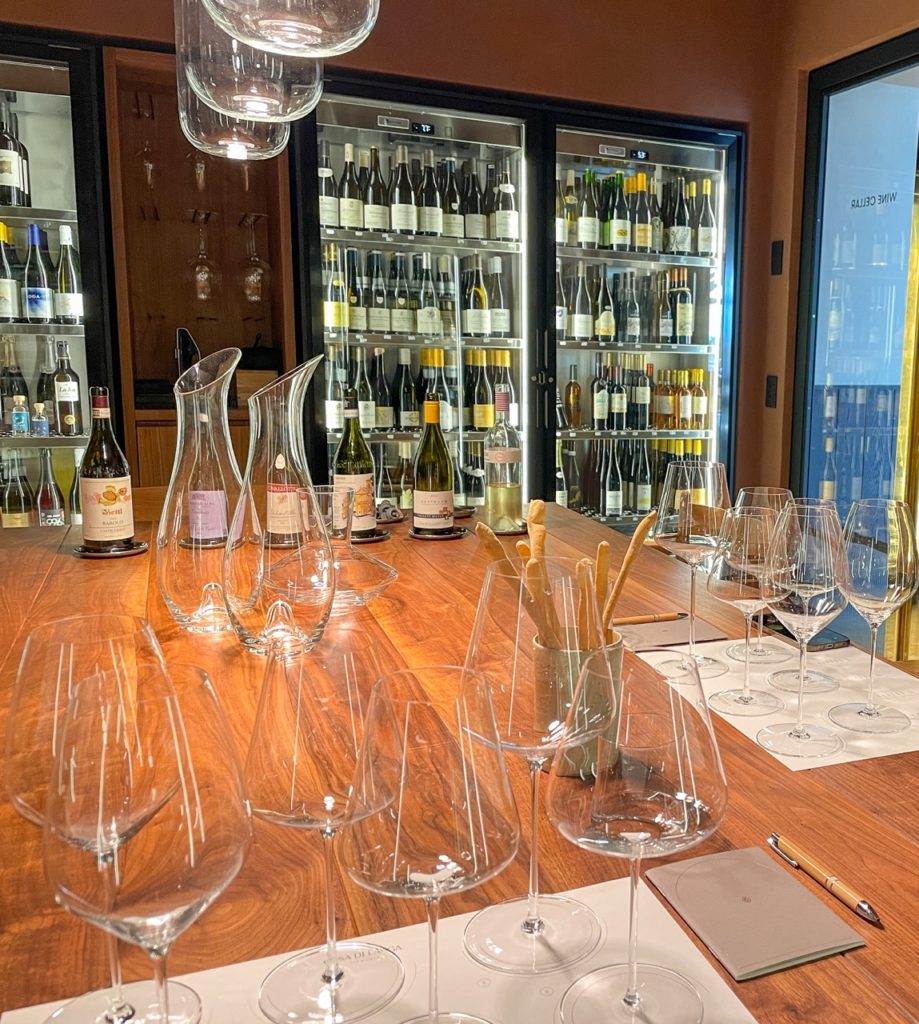
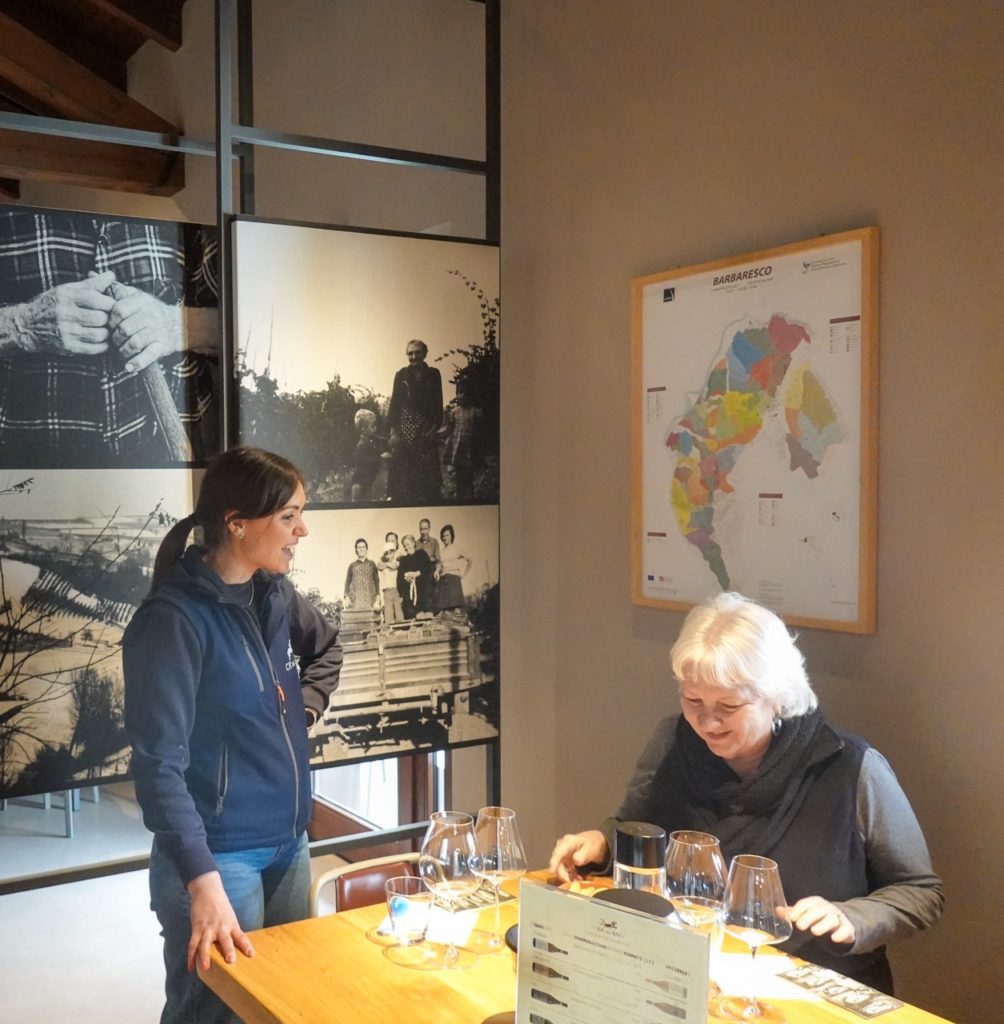
Can you say Nutello?
While the Langhe’s terraced hillsides are reserved for Nebbiolo, the valleys are the province of the hazelnut orchards. Italy is second only to Turkey in hazelnut production, and the prized variety grown in Piemonte, Nocciola, is a frequent ingredient in the local cuisine. In addition to the obvious – hazelnut gelato, hazelnut cake, and hazelnut chocolate delicacies (think Ferraro Rocher) – it’s not unusual to find these delicious nuts generously sprinkled on savoury dishes of the region. But, the grandaddy of hazelnut indulgences is a product that originated here in Piemonte and is ubiquitous all over Europe – Nutello. One local described being transported home by the aroma from a freshly opened jar of the creamy chocolate hazelnut spread.
Go Local
A Piemontese dinner often starts with Battuta di fassona al coltello, a beef tartare made with the meat of the local fassone cows. A simple and absolutely delicious combination of raw meat, olive oil, lemon juice, salt and pepper, this dish demonstrates the importance of using the best local ingredients to create magic. For the next course, Agnolotti del Plin was a favorite. This small stuffed pasta, sort of a cross between ravioli and tortellini, is filled with meat or vegetables, tossed with sage infused butter, and sometimes sprinkled with chopped hazelnuts. Then there’s Tarjarin, a fresh noodle similar to tagliatelle that is made with several egg yolks and then tossed with either butter and sage or with a meat mixture made from a special sausage from the nearby Piemonte town of Bra (where the slow food movement was founded).
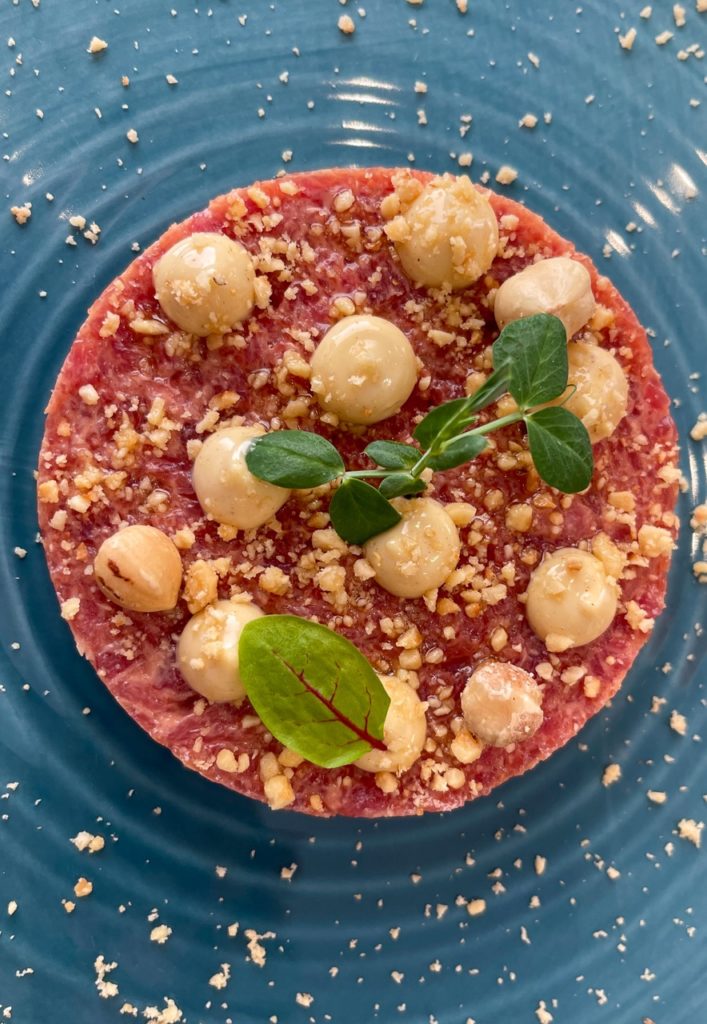
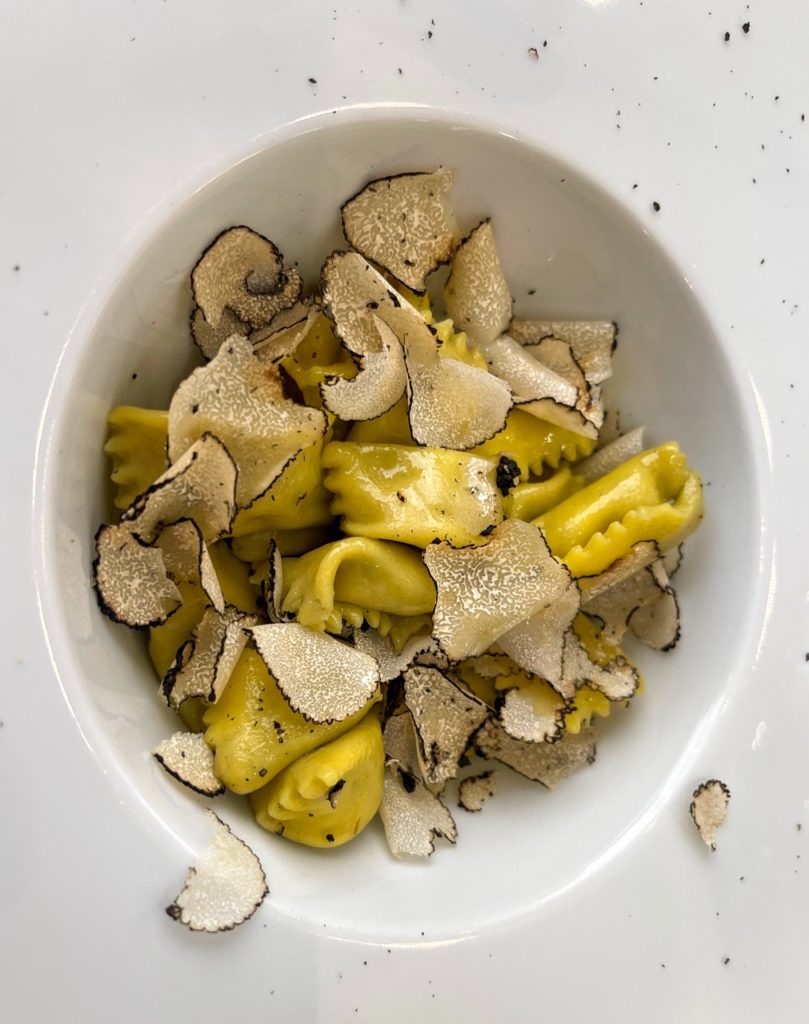
We’re Not in Pasta Anymore
Risotto is another local (and personal – especially for me) favorite. Rice in Italy might seem odd, but it turns out Italy is Europe’s largest producer of rice with most of the fields found in Piemonte where the runoff from the Alps supply plenty of fresh water. While arborio is the most common risotto rice, its sister rice, Carniola, is called the “Rolls-Royce of rice” because of its super creamy texture. There are many recipes for Piedmonte’s risotto, and we are lamenting the fact that we had time for just a few. We will need to return.
Earthy Magic
And then, there’s truffles. In the forests around Alba, a small township in Langhe, the most famous and prized Italian white truffles are foraged. Black truffles are also foraged in Piemonte and, for a few more Euros, it’s possible to have your Agnolotti del Pin, Tarjarin, or risotto topped with shavings of these gastronomic jewels.
So Many Castles
After a few days paradise, we were ready for another urban adventure. The capital of the Piemonte region, Torino (Turin), is about an hour north from the Langhe. Torino is a hub of art, Baroque architecture, dozens of medievel churches, and rich history. The Savoy family, the regional royalty, built a total of six castles in the area – one rivaling Versailles in size and grandeur – until the Italians decided in 1861 that they wanted to be a republic rather than a monarchy. I’m not sure why so many castles were necessary, but now many of them are museums and art galleries.
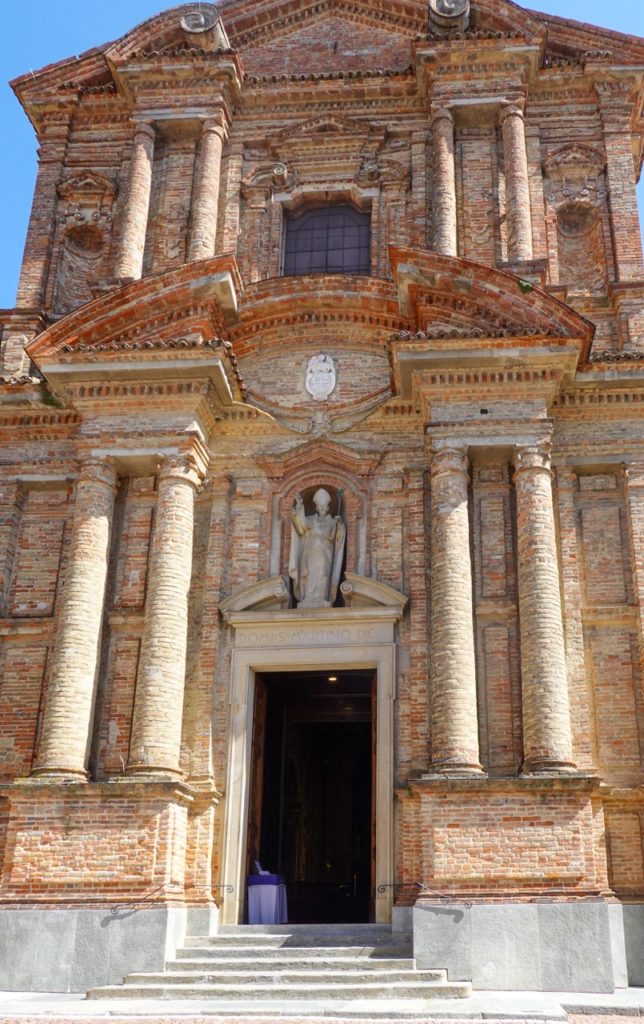
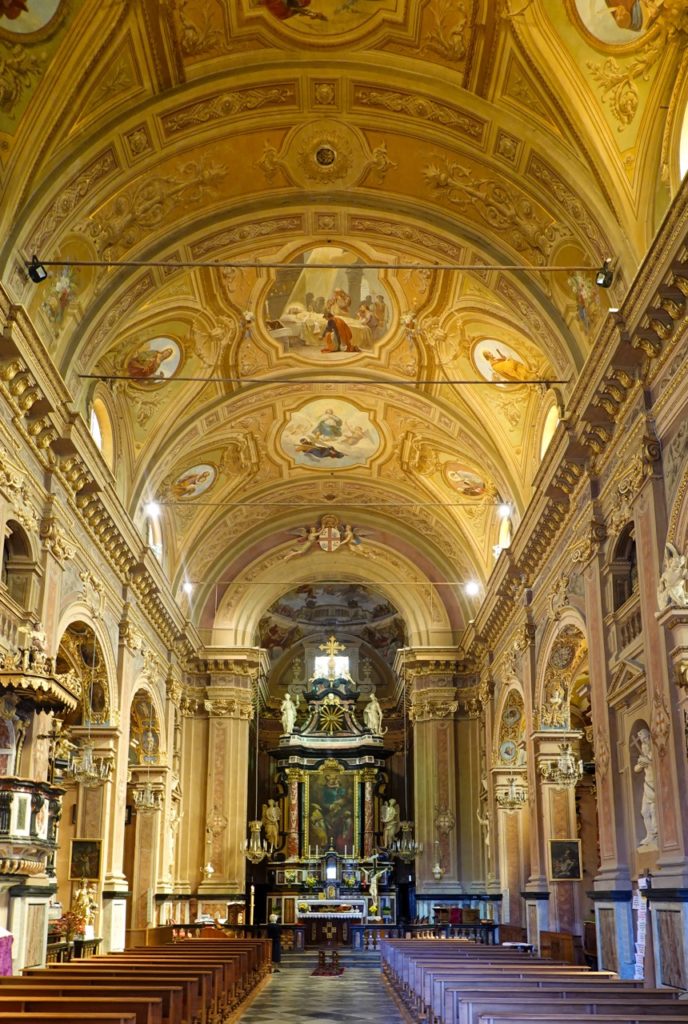
Lunch like a Local
Our time in Torino was short, but really whetted our appetite for a future visit. Strolling down a narrow lane in the old city, we stumbled on a tiny restaurant, serving traditional Piedmontese food, with three small outside tables. A simple menu, handwritten in Italian, consisted of four appetizers, two primi (pasta) selections, and two secondi. We chose two appetizers and both pastas along with a couple glasses of wine. While we were waiting for our food, the owner – an older Italian man, sat down at a piano near the restaurant entrance and began to play. With a mix from classical to improvisational jazz, he serenaded us for our entire lunch. Three young Irish men stopped to listen, continued on for a few steps, then doubled back and asked for a table next to us. They were in Torino to attend a football match and the five of us enjoyed the unexpected concert, shared stories of our travels, and savored wonderful fresh pasta. These completely authentic experiences are why we travel.
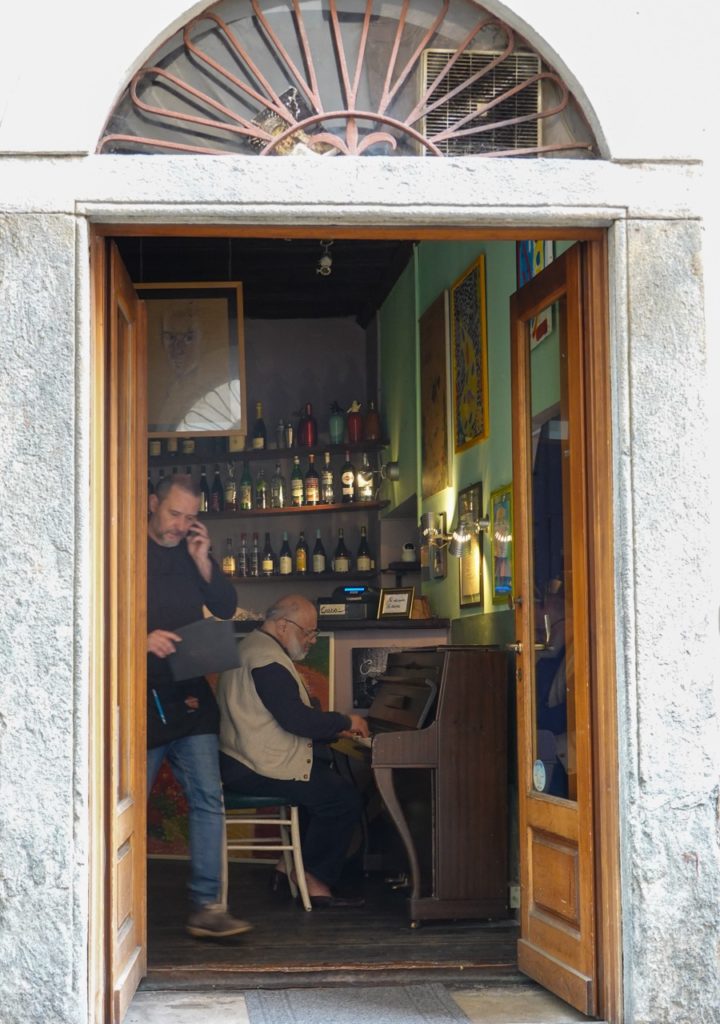
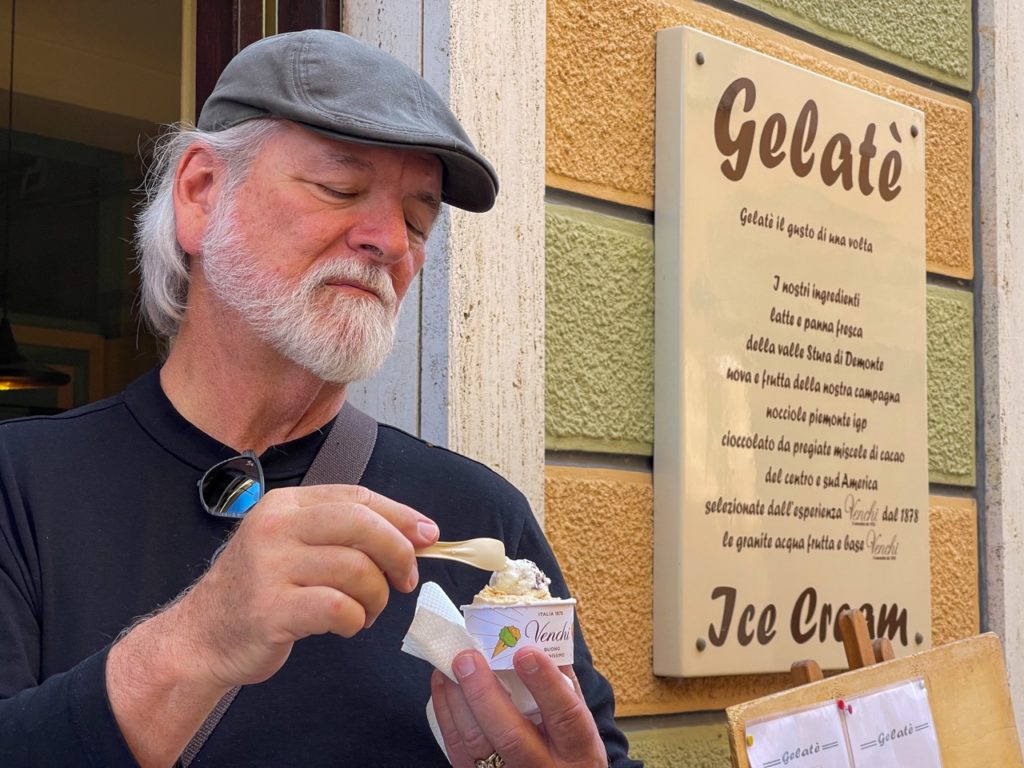
Chocolate Treats
After lunch, we had just enough time for another Torino treat – chocolate. We waited in line for a few minutes to get a seat at Caffé Bicerin where they’ve been serving their namesake drink, Bicerin, since the 18th century. Bicerin is made with three ingredients – espresso, chocolate, and cream. The important thing is to avoid mixing it “thereby allowing the various ingredients to come together directly on the palate.” We also discovered gianduiotto chocolate, a delicious combination of chocolate and, you guessed it, hazelnuts. As we walked back through the old city towards our car, we talked about all that things we want to see and do when we return to Torino, including checking out a couple of those castles.
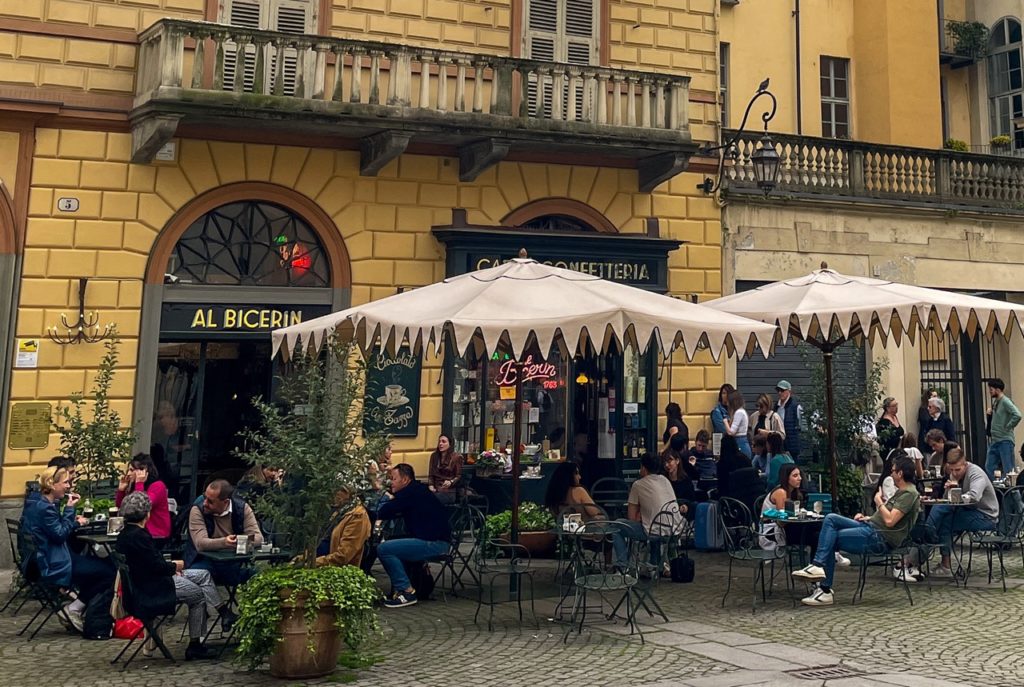
Arrivederci, Italia! Viva la France!
About Us
Welcome to our little corner of the world where we invite you to embark on exciting journeys with us!
We’re Ed and Bonnie, a duo passionate about exploring the world and experiencing its wonders. Our love for travel isn’t just about discovering new places; it’s about sharing those moments with cherished family and friends like you.
Our hope is that you will feel like you’re right there with us, sharing in the excitement and wonder of each destination. Better yet, let’s plan a rendezvous somewhere wonderful! Learn more

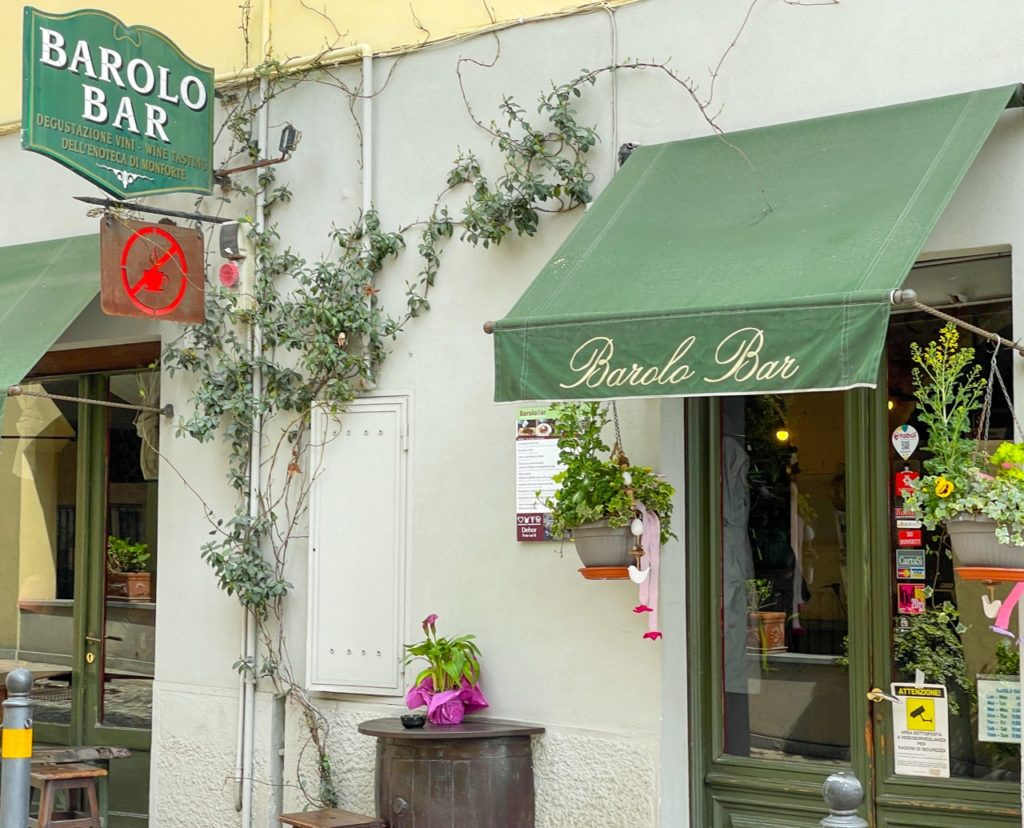
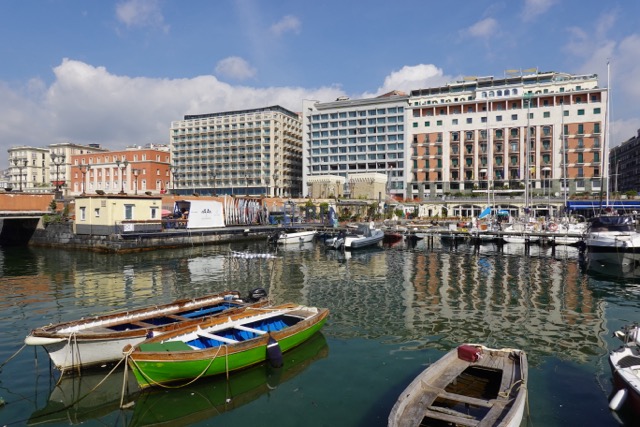
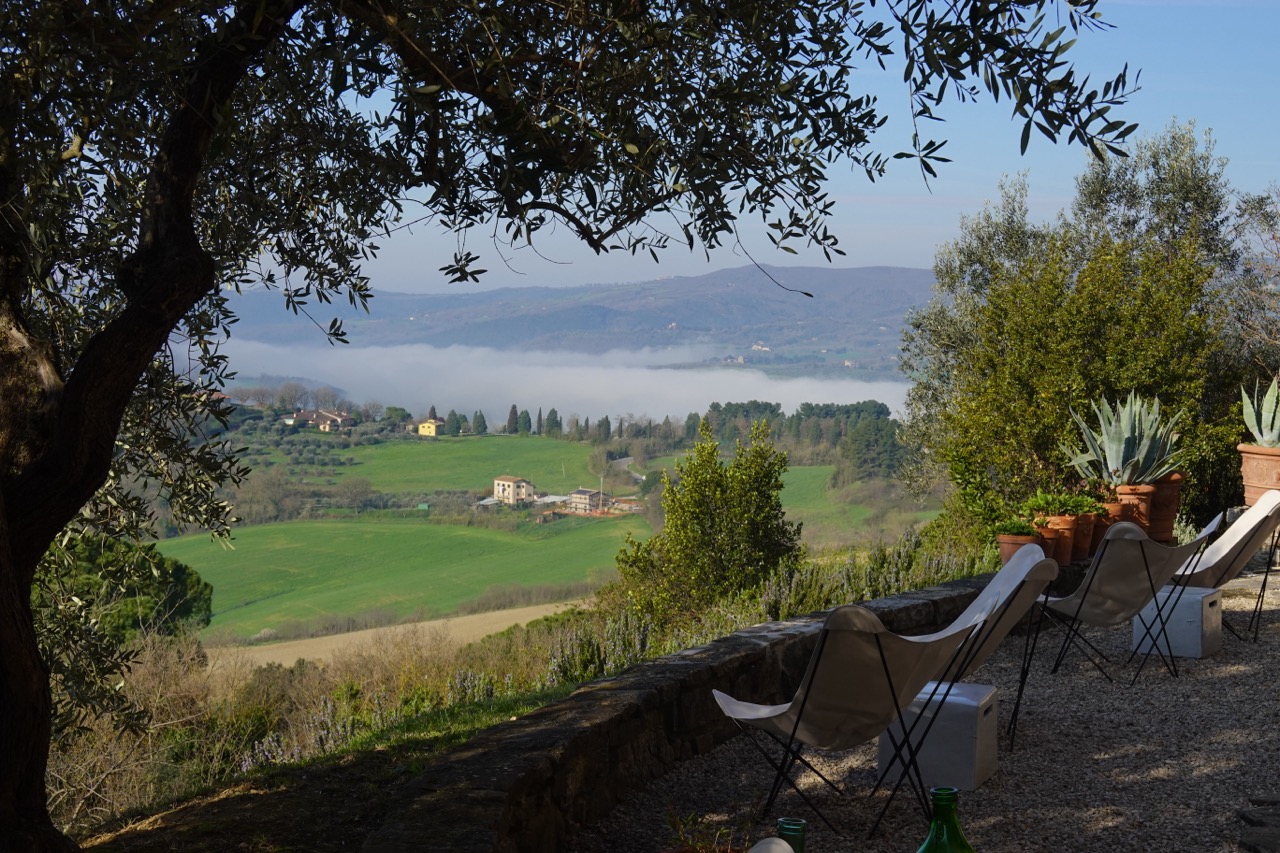
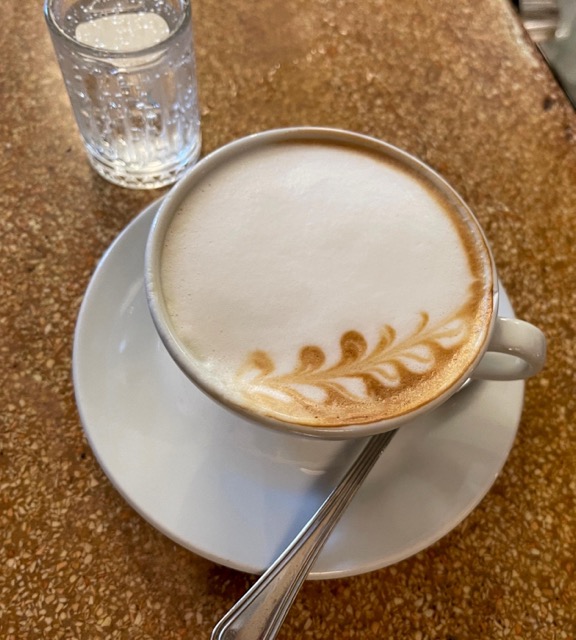
WOW==your Piedmontese Tour is Publishable–the Best Yet! The wine, risotto, chocolate et al were palpable, and the scenery in the Northwest totally Stunning! You obviously felll in love with this area and the city of Torino and convinced as to why. Not having toured this area, it is a total eye and taste opener for us. We share your love of Bella Italia, and Know you will return!
I have written again to Elli in Athens after discovering that I was using her old email, so hope to hear from her soon and connect you at Least for a coffee—and, hopefully, the National Museum. I do not recall where you are headed after Athens, but know you will stay in Nauphlia, a delightful Greek sea town. Be prepared for the fact that Greece (except for the Italianate architecture of the Ionian Islands–Corfu, Keflonia, Zante et all– is a Huge Contrast from what you experienced in verdant Italy, and the Greeks have a Very different take as well, which may take some adjustment on your part. But be patient and realize their pride in their ancient past as opposed to their more challenging present. More dramatic, less mellow. As for the wine and cuisine, you will enjoy but not be eating and drinking at the level of complexity you have recently experienced. Yet Greece and the islands each have their charm, especially before the heat and crowds of summer. I, personally, cannot imagine being there without a daily swim, though water may be chilly still. Definitely a Sea Culture, including the seafood and salad. In the meantime, enjoy Paris–what’s not to love? Thrilled for you both! Filakia, J&N xox
Wow Ed, wonderful post and beautifully written. I could almost taste the wines from your eloquent descriptions. The next best thing to being there with you and Bonnie. Hasta Pronto